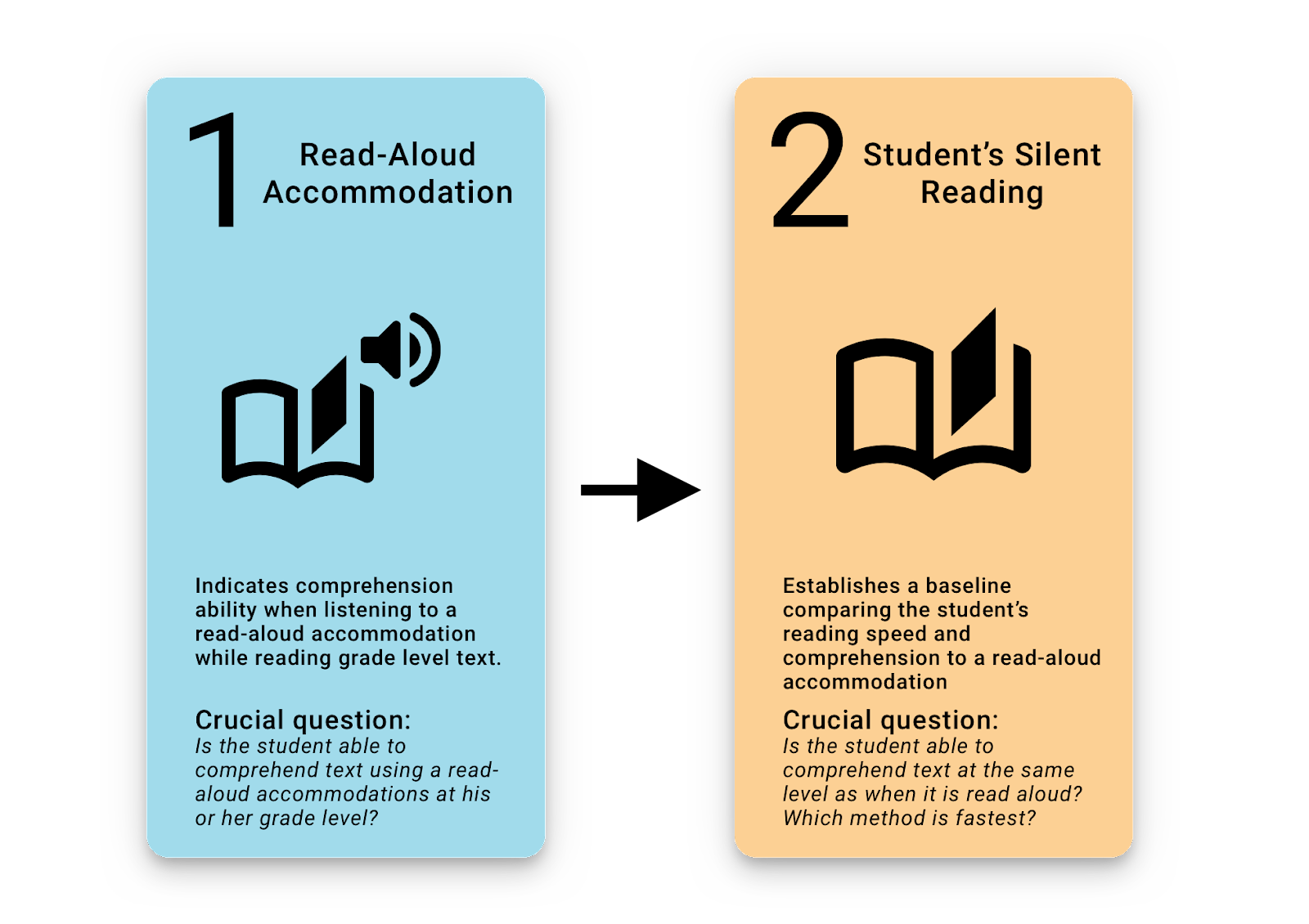uPAR 1: Overview
Last Modified on Tuesday, 07-Feb-2023 15:45:12 GMT
The Universal Protocol for Accommodations in Reading (uPAR) gives IEP teams empirical evidence whether a student who reads below grade level may or may not benefit from an instructional read-aloud accommodation. Where an accommodation is not appropriate, uPAR gives definitive data signaling the necessity of instructional modifications. uPAR also can provide evidence to substantiate when a reading accommodation is no longer needed. RTI and/or MTSS teams can use uPAR to gauge the appropriateness of a text reader's use as an intervention, and it can be used as the basis for planning the provision of accessible instructional materials.
uPAR has been developed to evaluate students' comprehension under two reading conditions: silent reading and a read-aloud accommodation. Passages of appropriate length have been developed for elementary, middle and high school grade levels. For each grade level, there are informational or narrative passages on a variety of topics.

Passages and comprehension questions were professionally developed specifically for uPAR. The passages were scored for mid-grade level readability. Comprehension questions were written to be considerate, less complex, in an effort to minimize comprehension errors due to question complexity.
The online version of uPAR is simple and easy to administer. The major advantages of uPAR online is that it can be administered to groups of students at one time, saving educators time with minimal teacher training and no paper to shuffle. uPAR can be administered in 20-30 minutes, and it automatically generates data reports.
An implementation guide has been developed to help administer uPAR. Click the image below to access the Implementation Guide PDF.

WHO & WHEN
In advance of administering uPAR, educators are encouraged to "preview" students who may be in need of an accommodation. This preview process should begin with a list of students who have an IEP with a reading goal, on the assumption that these students are not reading at grade level and should be considered for accommodations in order to access the text used as part of curricular instruction. Optimally, this preview process should take place prior to or at the beginning of the school year.
For each student on the list, consider the following:
-
Will the student still be reading below grade level if the current reading goal is achieved?
-
Does the student understand grade-level reading material when it is read to him/her at a higher level (one grade level or more) than when the text is read independently by the student?
-
Does the student currently receive adult reader accommodations as listed on the IEP?
-
If a student reads near grade level or below, does it take significantly more time for that student to read the text compared to same-grade peers such that it interferes with engagement, motivation and task completion?
If the answer to any of the above questions for a given student is "yes", then uPAR should be administered to definitively address the benefit of reading accommodations. Using a preview process along with uPAR, educators are using an evidence-based process to make annual accommodation decisions that affect instruction as well as testing.
In cases where the need for reading accommodations has been previously documented using uPAR (e.g. as part of an educational review process), it can be re-administered to see if there are any gains in listening comprehension.
Even students reading at grade level may benefit from taking uPAR. Many students are exposed to above grade-level material, and uPAR will find the students who can listen above their independent reading level even if it as at grade level.
Once you have previewed the list of students and have determined to whom uPAR should be administered, it is advisable to schedule a time and location where uPAR can be delivered to a group of students. The size of the group of students may depend upon the number of computers/tablets available, but in any case, the educator supervising the administration should have sufficient adult support to answer individual student questions, and be able to observe and record behaviors (attention, motivation, engagement, frustration, non-compliance, etc.) noted during uPAR administration.
Next: Giving the Protocol

